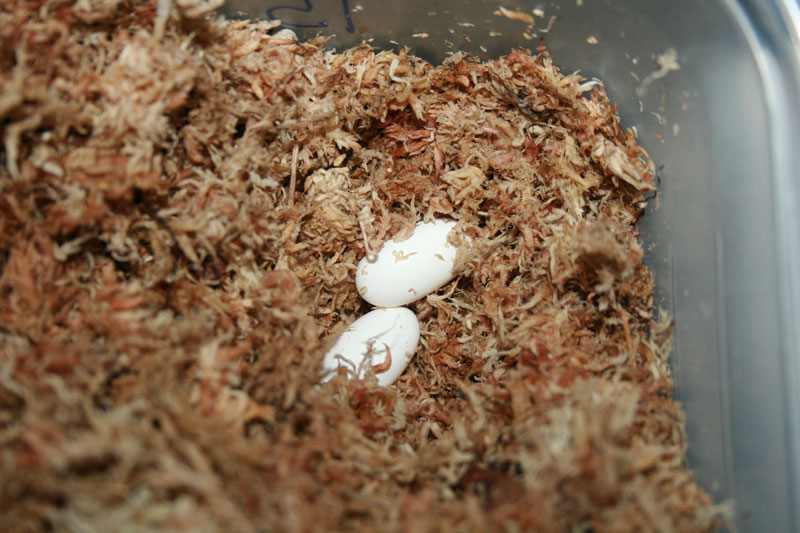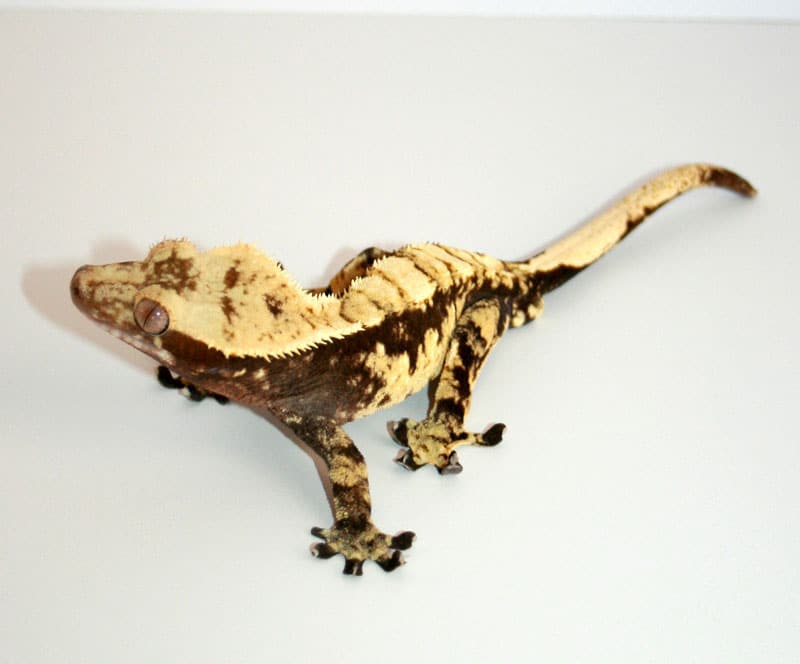Breeding tips for vibrant crested gecko morphs.
Crested geckos are prolific breeders and even the novice keeper can breed them successfully. Simply putting an adult male and female together in the same enclosure will result in copulation within days, if not hours.
Adult crested geckos will begin a natural breeding cycle lasting roughly eight to nine months starting in the spring and continuing through fall. Both male and female must be sexually mature before you introduce the male into the female's enclosure. Female crested geckos need to weigh a minimum of 38 to 40 grams and be 11/2 years old to start breeding. Males can weight slightly less, though they may not exhibit any interest in copulating until they're about 2 years old.
Depending on the male, courting may be gentle and consist of a series of chirps and head bobbing prior to copulation, or it may appear violent and aggressive. It is normal for the male to bite the female by the head crests and mount her during the mating process. They will stay locked together for several minutes until she is inseminated.
Breeding pairs can be housed together year round. A male doesn't need to be separated from his mate unless he is causing her stress by not leaving her alone. Females retain sperm for a couple of months, so it is not imperative to keep breeding pairs together all season if separation becomes necessary.
During a breeding season, female crested geckos will lay a clutch of two eggs every 30 to 45 days. When a gravid female is ready to deposit eggs, she will seek out a moist place in which to do so. An egg-laying box in her enclosure will allow you to keep track of the eggs and remove them easily. It can be a plastic container approximately 8 inches long by 5 inches wide by 5 inches tall, filled to a depth of 4 inches with moistened sphagnum moss.

Kimberly Lucas
Two crested gecko eggs rest on moss.
If you notice the female digging holes in the moistened substrate during the evening, check the following morning to see if the substrate appears packed down, and if the holes are covered-both are good signs that the female crested gecko has deposited her eggs.
To create a simple incubation box, fill a plastic shoebox two-thirds full with your desired incubation medium, which should be moist enough to hold water, but not wet enough to drip when you scoop up a handful. Popular types include Hatchrite, vermiculite, perlite and Superhatch. You can find most of these at your local gardening store or online at EverythingGecko.com. Punch five to eight 1/8-inch holes into the shoebox lid for ventilation.
Remove your crested gecko eggs from the egg-laying box gently, without rotating any out of the original positions in which they were laid, and sink them about a quarter-inch down into the incubation medium. Put the shoebox lid in place and place the incubation box in a cool, dark place, such as on a shelf in a closet.
A temperature-regulating incubator is not necessary to hatch crested gecko eggs. At Gorgeous Gecko, we incubate crested gecko eggs at room temperature, which fluctuates between 72 and 78 degrees Fahrenheit at the height of the breeding season. This temperature range will result in hatchlings emerging after 60 to 70 days during the warmer months, or up to 120 days as the days grow cooler.
Before long, you will have a thriving colony of crested geckos.
Crested Gecko Hatchling Care
When a hatchling is fully developed inside its egg, it will make a slit in the pliable eggshell and poke out its head (known as "pipping"). They do not always emerge from the shell right away. Some hatchlings pop all the way out immediately, others sit tucked in their eggs for up to 24 hours, soaking up the remainder of their yolk sacs.
After they are completely free of their shells, leave the hatchlings in the incubation box until after their first shed. This usually occurs within 12 to 24 hours of hatching. Then move each one to a small enclosure no larger than a large Critter Keeper or 5-gallon aquarium, lined with paper towel. Keep the décor in your hatchling gecko's new home very simple, adding no more than a small plant and twisted vine. Small, shallow jar lids make good food and water dishes for hatchlings, as they are shallow enough to allow a hatchling gecko to easily eat and drink from them. Along with misting twice daily, adding a moist hide may help prevent potential shedding problems. The hide can be a small, plastic container filled with moistened sphagnum moss, with a hole cut in the lid that's large enough to allow the gecko to easily enter and exit.
Kimberly Kay Lucas owns Gorgeous Gecko and has been breeding crested geckos for more than 10 years. She has developed an international reputation for consistently producing quality, healthy crested geckos, and her growing love for reptiles has led to an expansion of her brand to include gecko supplies, clothing and art. Visit her at GorgeousGecko.com and EverythingGecko.com.


